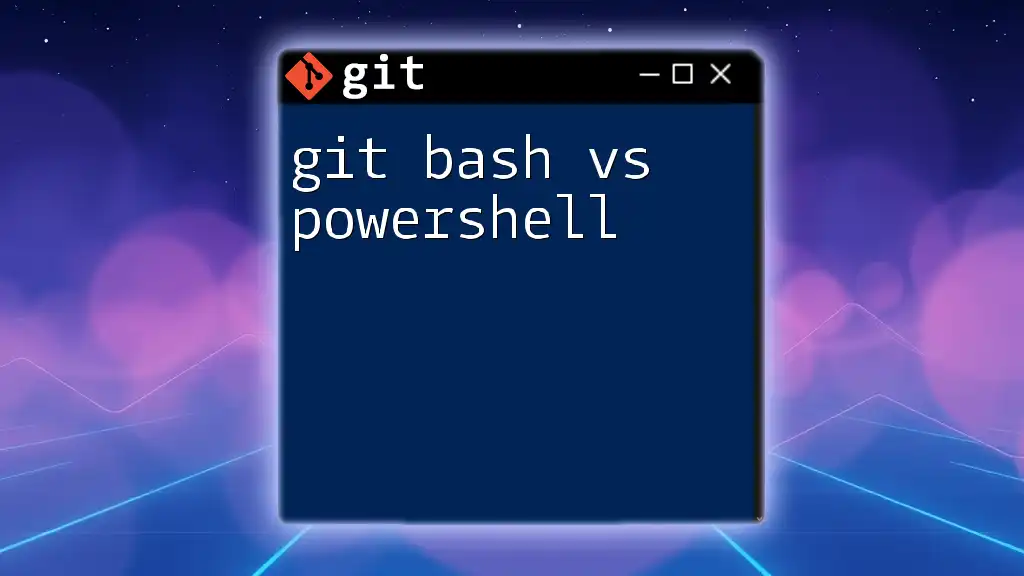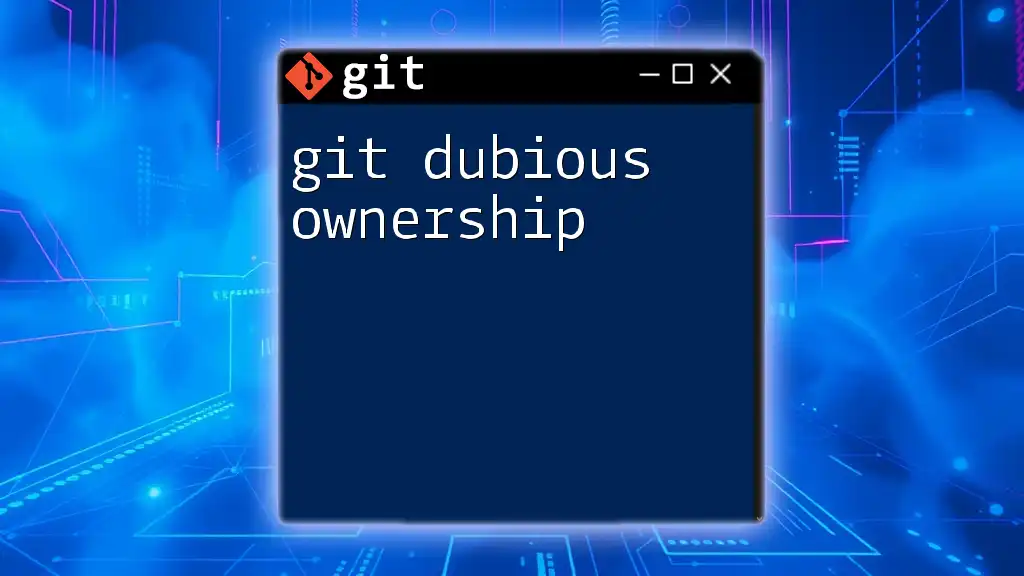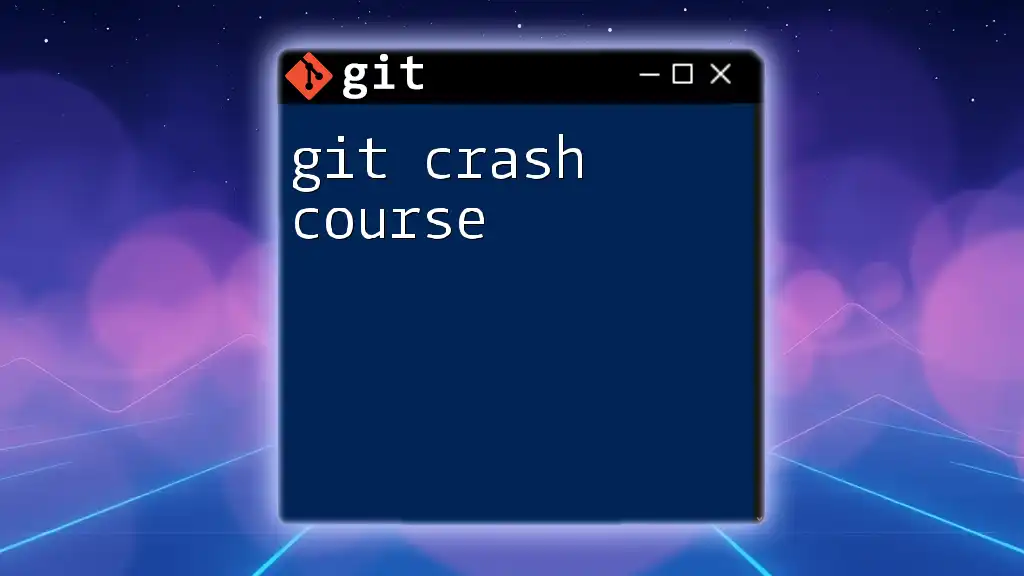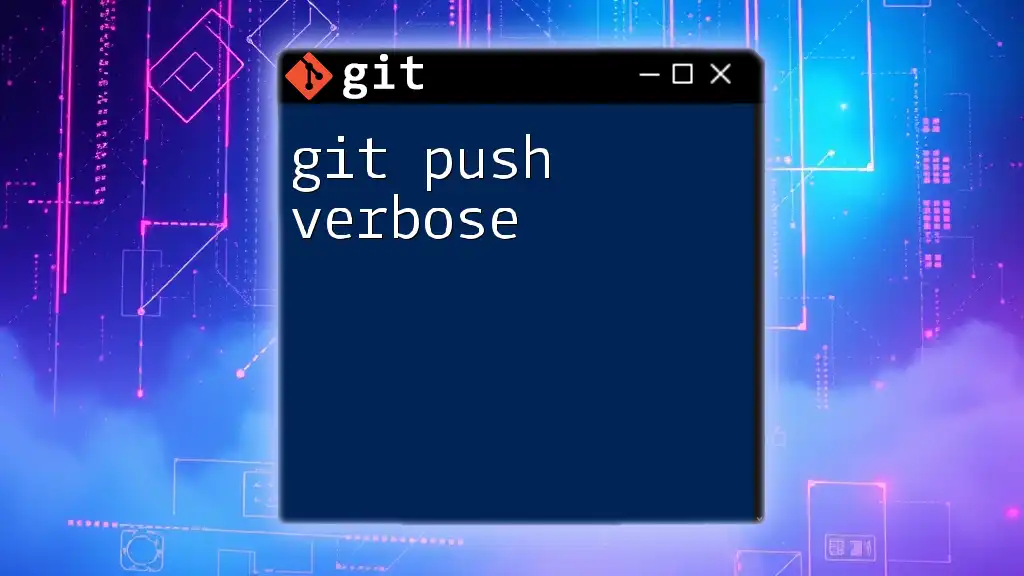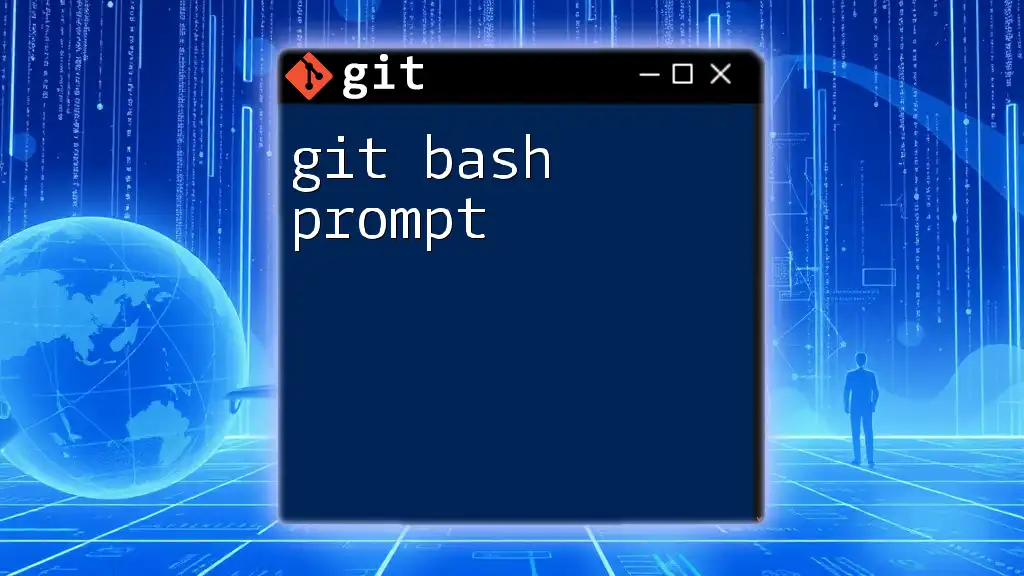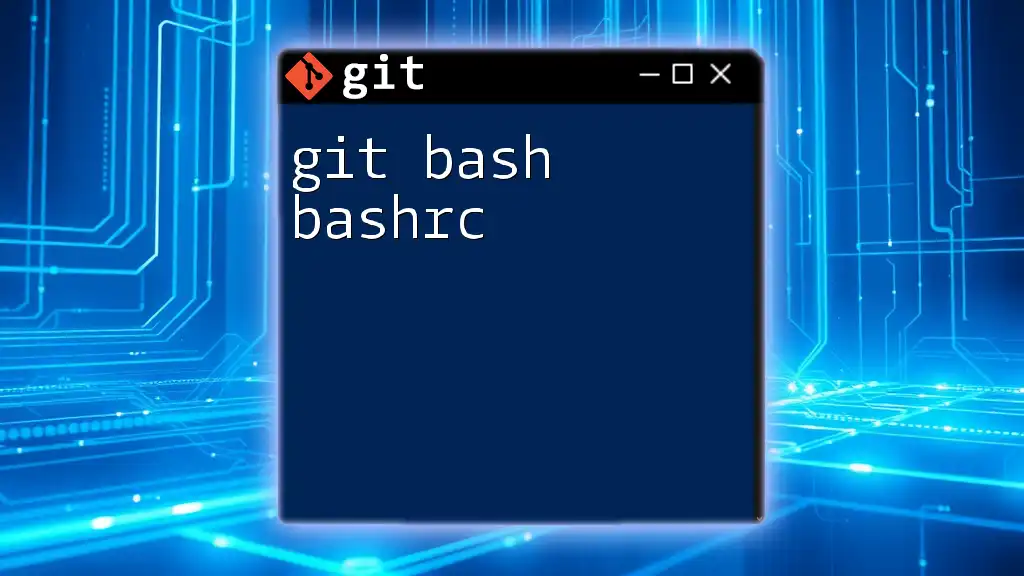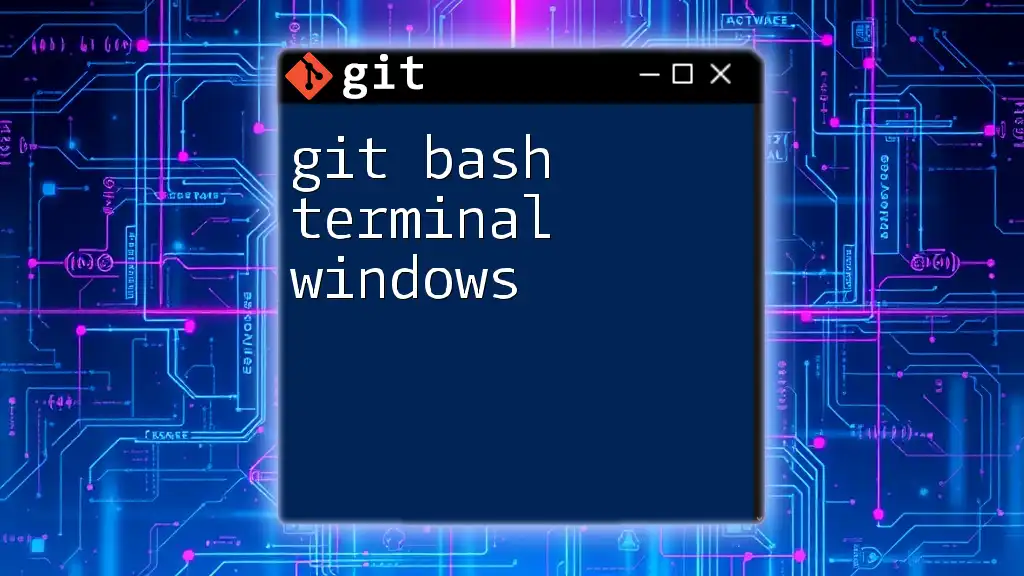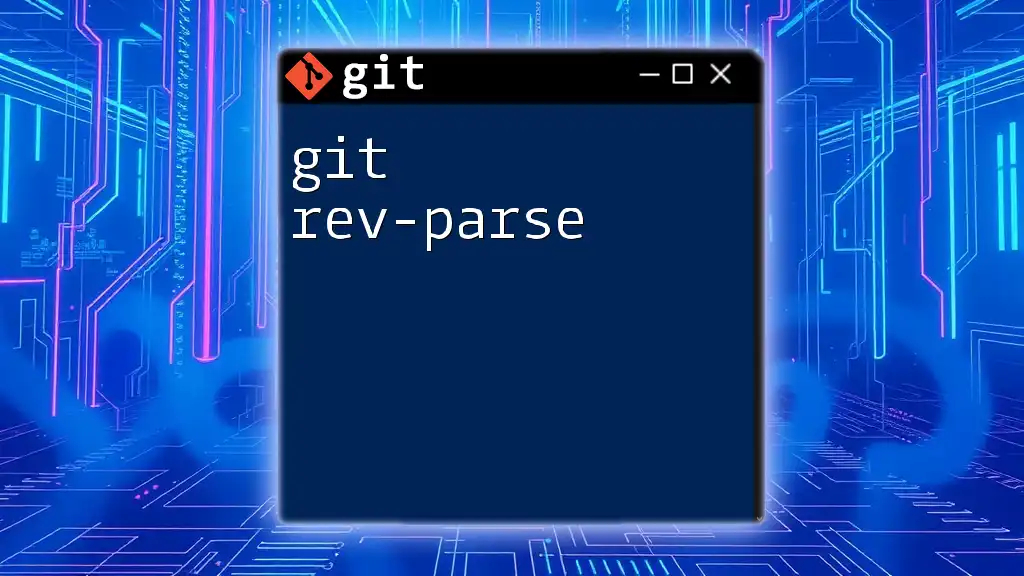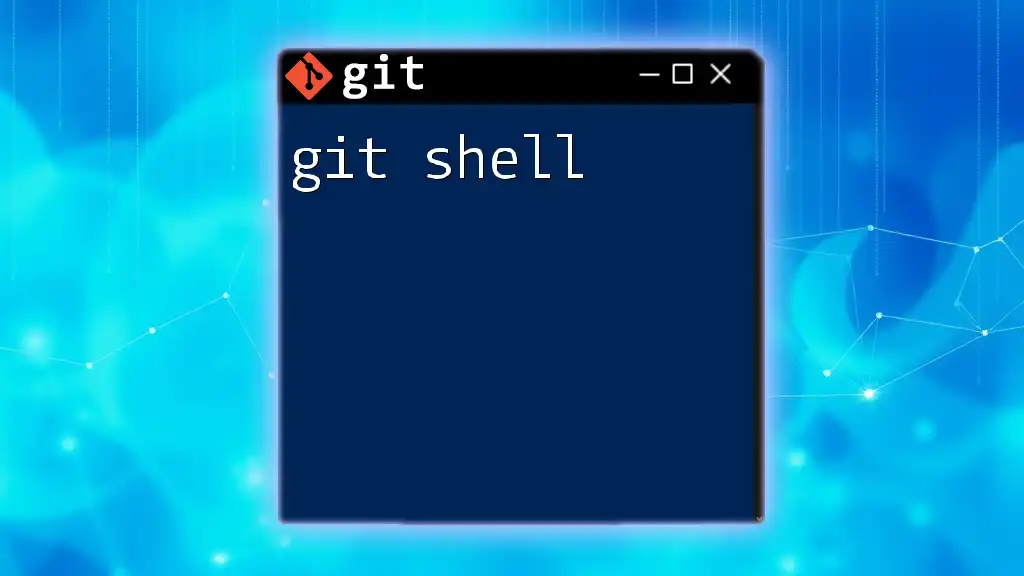Git Bash is a Unix-like command line interface that provides a familiar environment for Git usage on Windows, while PowerShell is a more powerful and versatile shell designed for system administration, allowing users to leverage Git commands alongside Windows-specific commands.
Here's a simple example of using Git commands in both environments:
# Git Bash example
git status
# PowerShell example
git status
Understanding Git Bash
What is Git Bash?
Git Bash is a command-line interface that provides a Unix-like environment on Windows. It allows users to interact with Git repositories directly, facilitating seamless version control management. Born out of the need for a reliable Git interface in a predominantly Windows environment, Git Bash combines the power of Git with the usability of a simplified shell.
Key Features of Git Bash
Unix-like Environment
Git Bash mimics a Unix shell, providing a familiar environment for users accustomed to Linux or macOS systems. This makes it particularly useful for developers transitioning to Windows without losing their command-line fluency.
Built-in Git Support
When you install Git for Windows, Git Bash comes bundled with it, ensuring that users have immediate access to Git commands without the need for additional setup.
Command Line Utilities
Git Bash encompasses several Unix command-line utilities, making it versatile for everyday tasks. Some of the common commands include:
git clone <repository-url>
This command is used to create a local copy of a remote repository.
git status
With this command, users can check the current state of their working directory and what changes are staged for the next commit.
Pros and Cons of Git Bash
Advantages:
- Git Bash is straightforward and user-friendly for executing basic Git commands, making it an excellent choice for beginners.
- As a lightweight application, it loads quickly, contributing to efficient workflow management.
- For those already familiar with Unix/Linux environment commands, Git Bash feels like a natural fit.
Drawbacks:
- Git Bash primarily focuses on Git operations and may limit users looking for a comprehensive command-line utility for various tasks.
- Users who are not familiar with Unix commands might find themselves at a disadvantage and may need time to adjust.
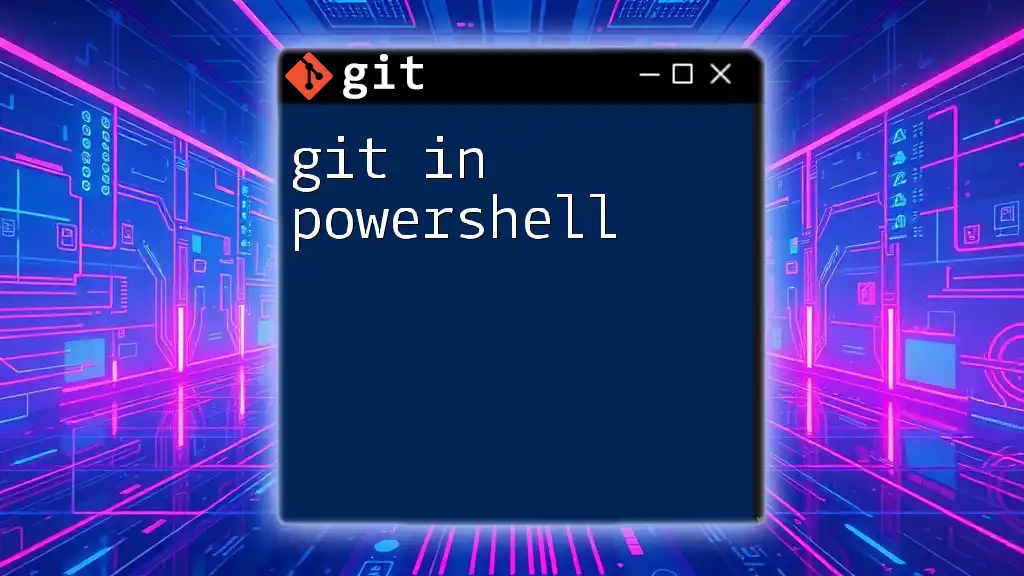
Understanding PowerShell
What is PowerShell?
PowerShell is more than just a command-line interface; it is a powerful scripting language developed by Microsoft. Designed to automate system administration tasks, PowerShell allows users to interact with both the operating system and applications, making it a multifaceted tool for developers and IT professionals alike.
Key Features of PowerShell
Object-Oriented Interface
Unlike traditional command-line interfaces that handle text-based output, PowerShell manages data as objects. This characteristic enables users to manipulate data in a structured manner, enhancing workflow efficiencies.
Powerful Scripting Capabilities
PowerShell excels in scripting, allowing users to automate tasks through comprehensive scripts. With the ability to create reusable functions and modules, PowerShell is an ideal choice for developers looking to streamline repetitive processes.
Integration with .NET Framework
PowerShell seamlessly integrates with the .NET framework, granting access to a rich library of functionalities. This connection enriches the command line experience and facilitates a variety of system tasks.
Examples of Common Commands
For instance, to check the installed Git version using PowerShell, one would use:
git --version
Additionally, PowerShell allows users to leverage pipelines to process data more efficiently. For example:
Get-Process | Sort-Object CPU -Descending
This command retrieves all processes, sorts them by CPU usage, and displays the results for analysis.
Pros and Cons of PowerShell
Advantages:
- PowerShell serves as a versatile tool that is not limited to Git but extends to general system administration, making it perfect for multifaceted roles.
- With a rich set of features, PowerShell can handle complex scripting tasks that greatly enhance productivity.
- The active community support provides a wealth of shared knowledge, troubleshooting resources, and extensions.
Drawbacks:
- While powerful, PowerShell comes with a steeper learning curve, particularly for those new to command-line interfaces.
- Its complexity may overwhelm novices, who might seek a more straightforward option for executing Git commands.
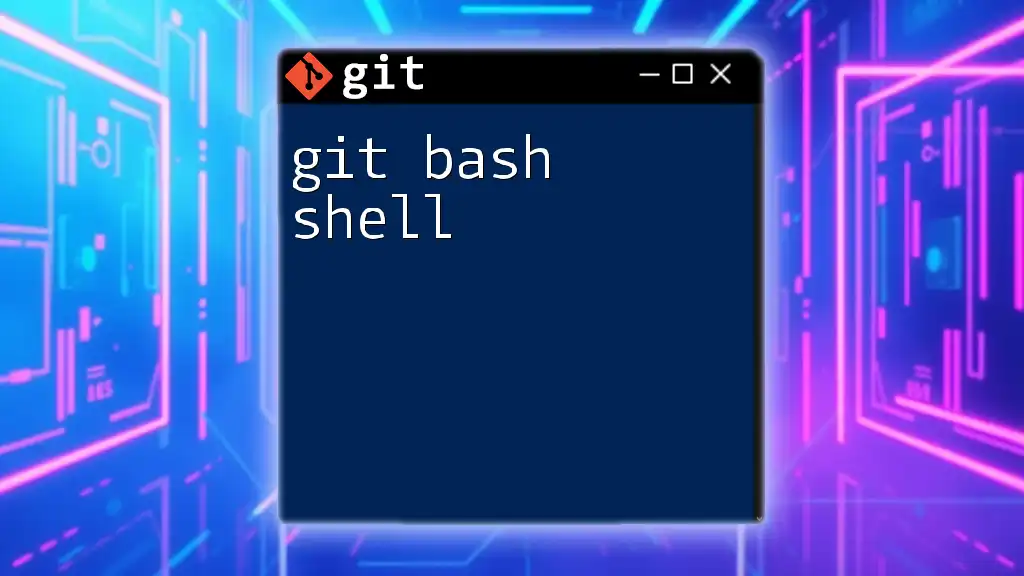
Detailed Comparison of Git Bash and PowerShell
User Interface and Experience
When considering user experience, Git Bash provides a simplistic, straightforward command interface tailored for Git operations, ideal for those already familiar with Unix commands. In contrast, PowerShell's rich feature set can be intimidating to beginners but presents broader opportunities for advanced users.
Command Syntax
The syntax for commands in both environments can differ. For example, in Git Bash, running a Git command is as simple as:
git status
In PowerShell, the same can often be achieved with similar syntax:
git status
However, PowerShell could integrate additional capabilities, such as aligning with other cmdlets for unique workflows.
Integration with Development Tools
Both Git Bash and PowerShell have integrations with popular integrated development environments (IDEs) and text editors. Git Bash tends to be the favored choice within IDEs specifically designed for Git manipulation, while PowerShell caters to a broader range of applications and traditional system administration tasks.
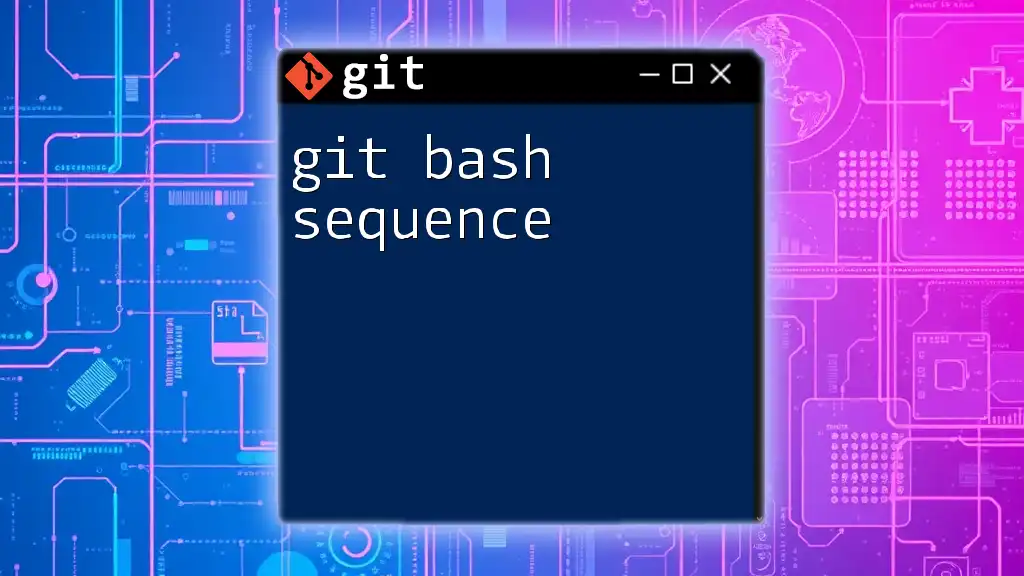
Use Cases for Git Bash and PowerShell
When to Use Git Bash
Git Bash is ideal for developers focused exclusively on Git operations. Its simplicity and lightweight nature make it a great tool for quickly executing commands or for those who prefer a no-frills approach.
Case Study: A junior developer may find Git Bash useful while working on a small-scale project to quickly clone repositories and manage branches without needing extensive system administration tools.
When to Use PowerShell
PowerShell is best suited for users who need to automate system tasks in addition to managing Git repositories. It's particularly advantageous in enterprise environments where scripting capabilities are essential for efficient task automation.
Case Study: An IT administrator might use PowerShell to compile system reports while executing Git commands as part of larger deployment scripts.

Conclusion
In the ongoing debate of git bash vs powershell, both environments come with their unique strengths. It boils down to the specific needs of the user: choose Git Bash for simplicity and focused Git management or PowerShell for a comprehensive tool that can handle a diverse array of system administration tasks. Understanding your objectives will guide you in selecting the right tool for your command-line needs.
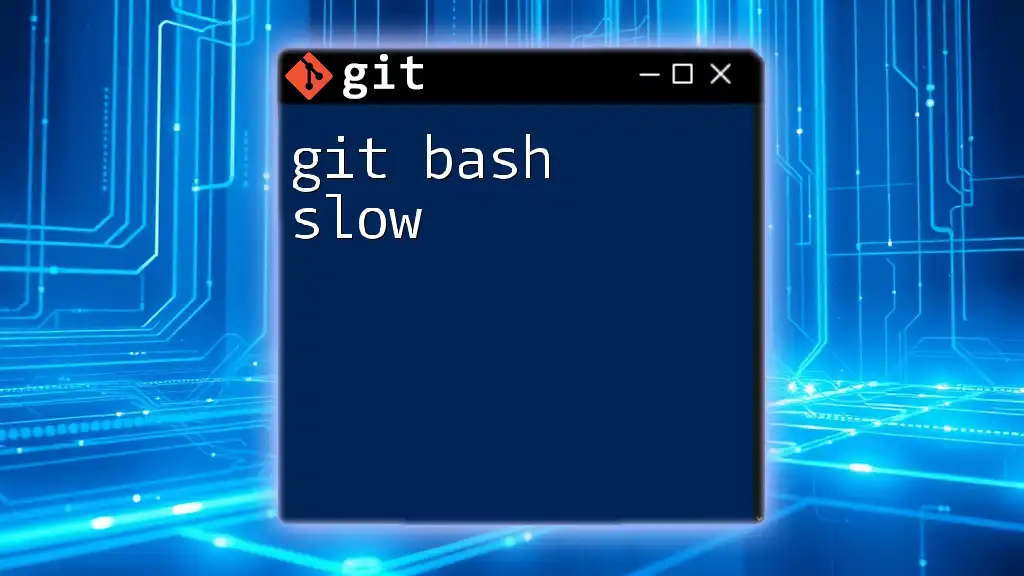
Additional Resources
Explore tutorials and documentation for both Git Bash and PowerShell for further learning, along with recommended courses that provide in-depth training.
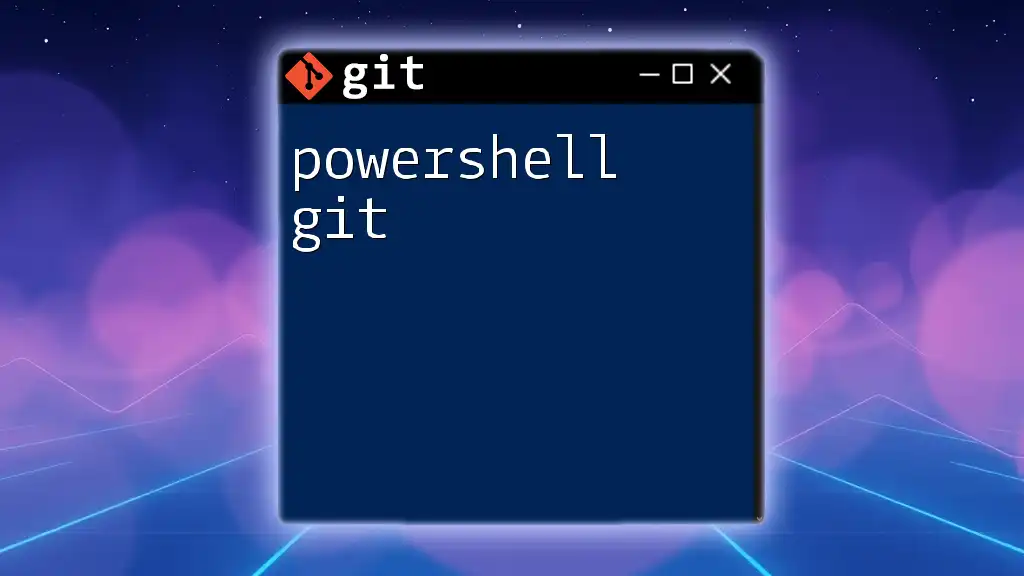
FAQ Section
-
What is the primary difference between Git Bash and PowerShell?
Git Bash is specifically tailored for Git operations in a Unix-like environment, while PowerShell is a versatile scripting language designed for system administration tasks. -
Can I use PowerShell to run Git commands?
Yes, PowerShell supports Git commands, allowing you to manage repositories without needing a separate environment. -
Is Git Bash only for Windows users?
While Git Bash is primarily designed for Windows, it can also be used on macOS and Linux through terminal emulators. -
Which tool is better for beginners?
Generally, Git Bash may be more accessible for beginners focused on Git, while PowerShell poses a steeper learning curve but offers greater capability for advanced users.

